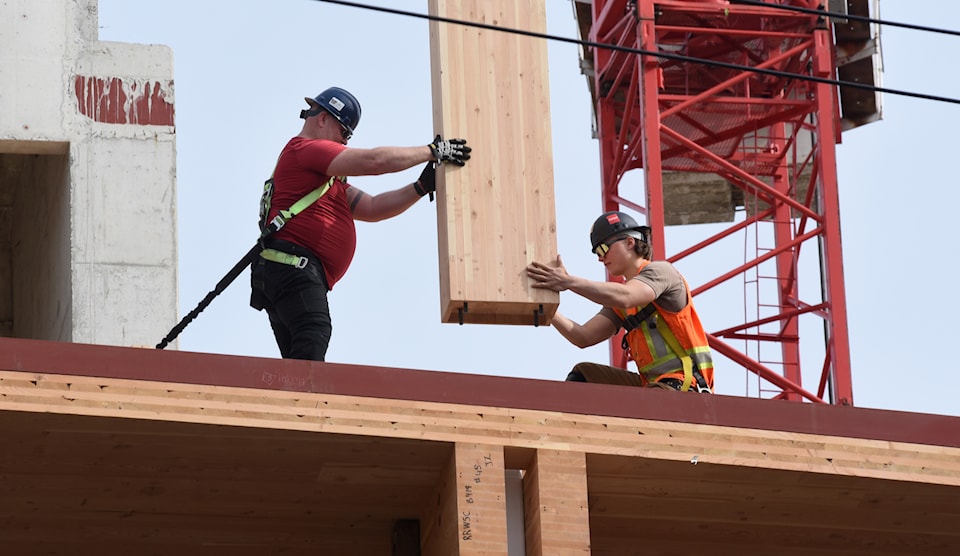Building code updates from the beginning of 2025 are seeing a more eco-friendly and efficient construction material become mainstream.
Previously, encapsulated mass timber construction buildings were authorized to be built up to only 12 storeys tall, however, this limit was recently raised to 18 storeys.
Canadian Wood Council (CWC) executive director Steven Street said the update to the code on this material raises its ability to be used in more projects.
“Since the time I came into the program in 2007, we’ve seen the code go from four storeys to six storeys, six to 12, and now it's up at 18, Street said.
“When the first edition came out in 2022, which was up 12 storeys, it was really focusing on residential and office. This 18 storeys now brings in all these other major occupancies,” he said.
The announcement to raise the height limit was made in April 2024, with the actual amendment to the building code coming into effect on Jan. 1, 2025.
CWC describes mass timber as a group of man-made wood products used in the building of structures.
Cross-laminated timber (CLT), nailed-laminated timber (NLT), glued-laminated timber (GLT), laminated strand lumber (LSL), laminated veneer lumber (LVL) and other large-dimensioned structural composite lumber (SCL) are the varied types of products which would fall into the mass timber classification.
CreateTO, a Toronto operation that manages city-owned lands, says a building is considered to be a “mass timber building” when the primary load-bearing structure is made using mass timber products, rather than steel or concrete.
Just last March, the federal government displayed its support for mass timber production in Nova Scotia by announcing $10 million in funding towards the production of a facility to be run by manufacturer Mass Timber Company.
This new business is set to hold a partnership with sawmills from Nova Scotia and various Indigenous businesses. Once complete in its facility’s construction, Mass Timber Company will be the first fully integrated mass timber manufacturer in Atlantic Canada.
Natural Resources Canada, a department of the Canadian government, states that mass timber poses a significantly lighter carbon footprint than other regularly used building materials. In addition, it is also natural and renewable.
Natural Resources Canada states that maximizing the use of mass timber in Canadian construction could remove an estimated 600,000 tonnes of carbon dioxide each year from the atmosphere by 2030.
There are also promising beneficial aspects for the economy. One study from the Mass Timber Institute of the University of Toronto displayed the efficiency when building.
Since these products are prefabricated by attaching multiple smaller wooden pieces into larger and stronger units, they are often much lighter than alternative building materials.
Prefabricated panels that are quickly assembled on site can potentially reduce construction timelines by up to 25 per cent and reduce construction traffic by up to 90 per cent.
Although the exact cost of mass timber products varies from region to region within Canada, areas where effective supply chains have been established are more cost-efficient than steel or concrete.
Mass Timber Institute states that in a future with supply chains able to meet demand for products, the cost of building materials will continue to decrease by up to 20 per cent.



